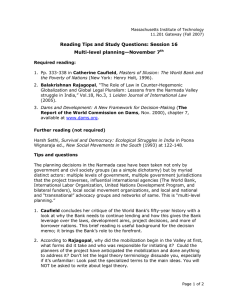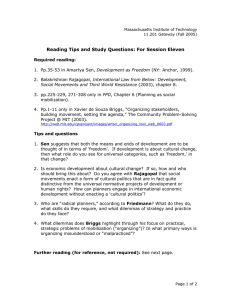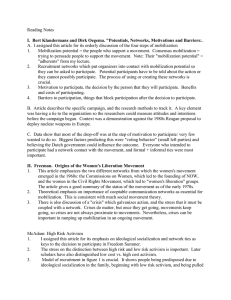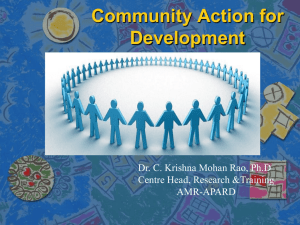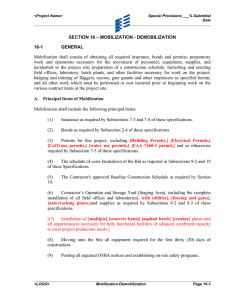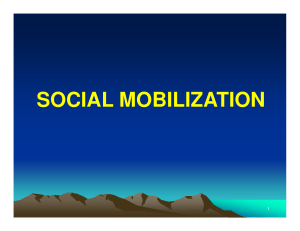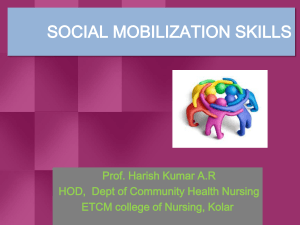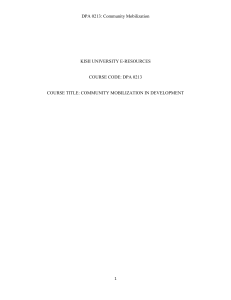Reading Tips and Study Questions: Session Nine
advertisement
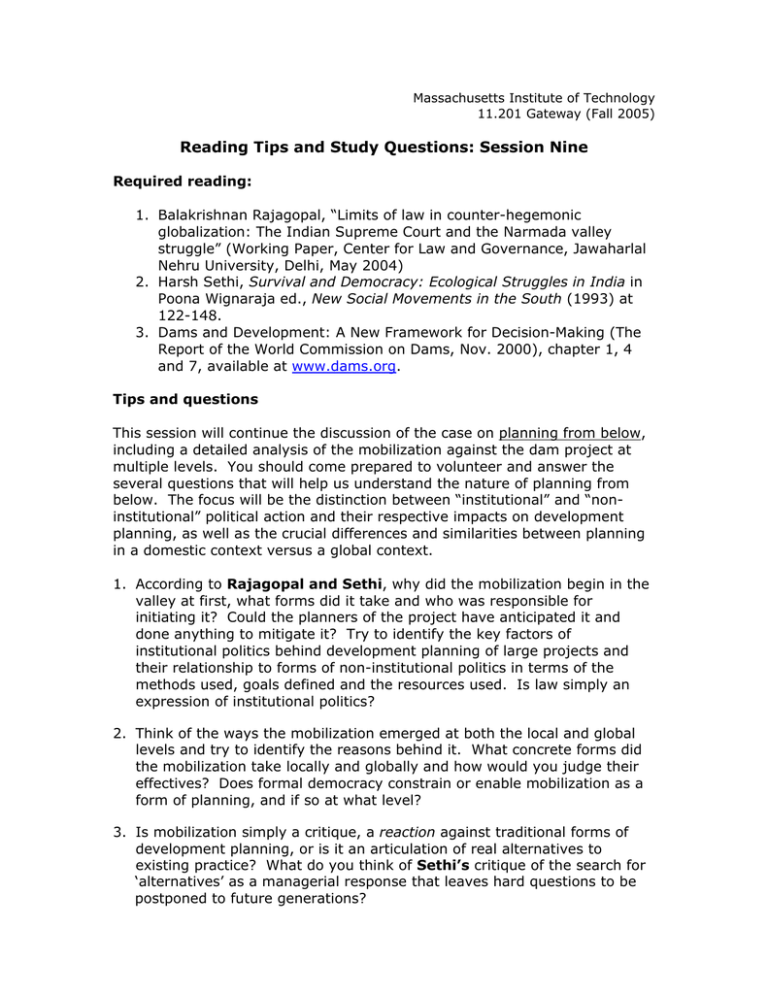
Massachusetts Institute of Technology 11.201 Gateway (Fall 2005) Reading Tips and Study Questions: Session Nine Required reading: 1. Balakrishnan Rajagopal, “Limits of law in counter-hegemonic globalization: The Indian Supreme Court and the Narmada valley struggle” (Working Paper, Center for Law and Governance, Jawaharlal Nehru University, Delhi, May 2004) 2. Harsh Sethi, Survival and Democracy: Ecological Struggles in India in Poona Wignaraja ed., New Social Movements in the South (1993) at 122-148. 3. Dams and Development: A New Framework for Decision-Making (The Report of the World Commission on Dams, Nov. 2000), chapter 1, 4 and 7, available at www.dams.org. Tips and questions This session will continue the discussion of the case on planning from below, including a detailed analysis of the mobilization against the dam project at multiple levels. You should come prepared to volunteer and answer the several questions that will help us understand the nature of planning from below. The focus will be the distinction between “institutional” and “noninstitutional” political action and their respective impacts on development planning, as well as the crucial differences and similarities between planning in a domestic context versus a global context. 1. According to Rajagopal and Sethi, why did the mobilization begin in the valley at first, what forms did it take and who was responsible for initiating it? Could the planners of the project have anticipated it and done anything to mitigate it? Try to identify the key factors of institutional politics behind development planning of large projects and their relationship to forms of non-institutional politics in terms of the methods used, goals defined and the resources used. Is law simply an expression of institutional politics? 2. Think of the ways the mobilization emerged at both the local and global levels and try to identify the reasons behind it. What concrete forms did the mobilization take locally and globally and how would you judge their effectives? Does formal democracy constrain or enable mobilization as a form of planning, and if so at what level? 3. Is mobilization simply a critique, a reaction against traditional forms of development planning, or is it an articulation of real alternatives to existing practice? What do you think of Sethi’s critique of the search for ‘alternatives’ as a managerial response that leaves hard questions to be postponed to future generations?
